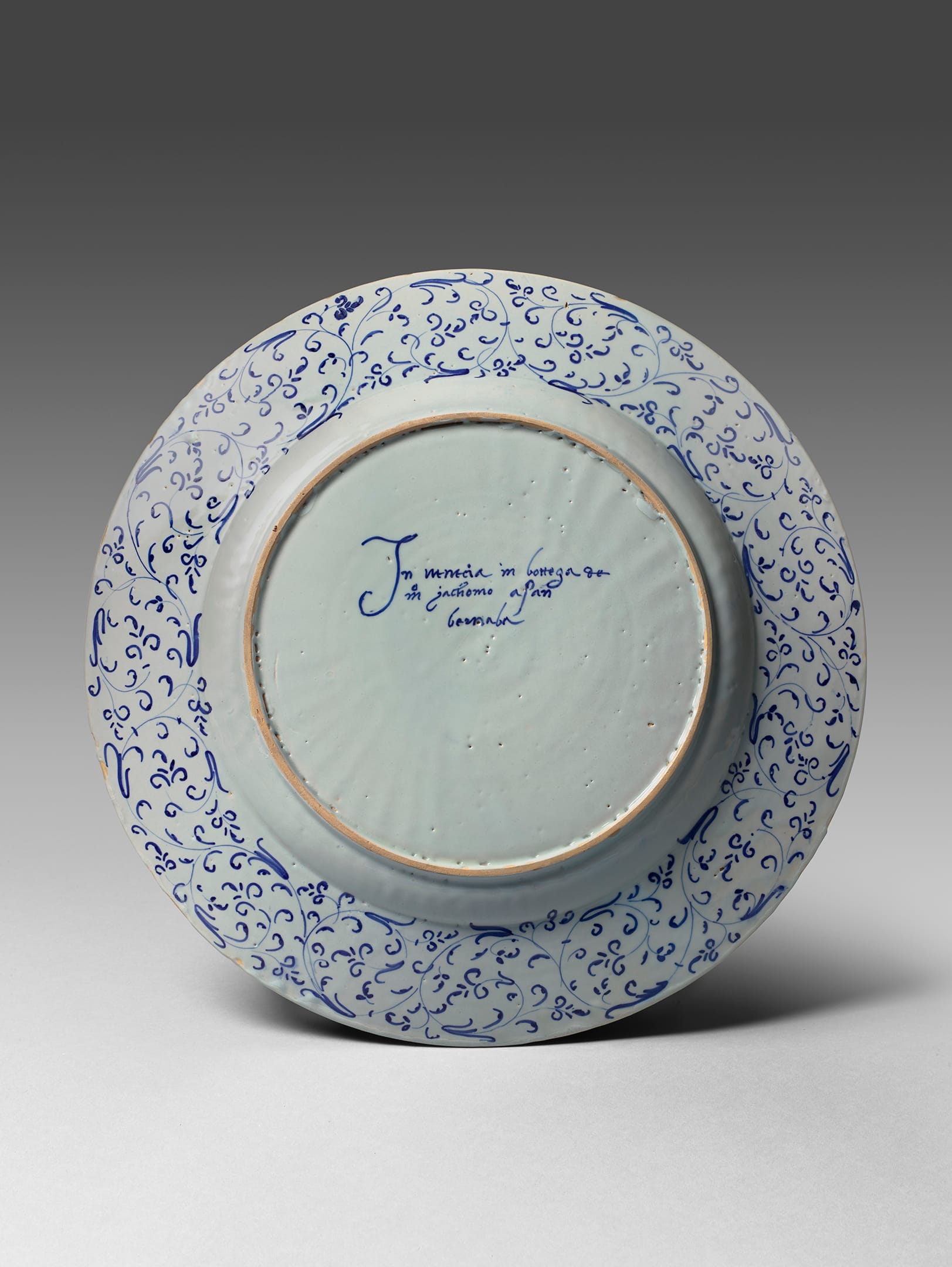The decorative motifs and technique used in the production of Venetian faience make this an art apart in the Italian Renaissance. They were in fact influenced by Venice’s commercial and military contacts with the East, which made it possible for objects very rare in the West to arrive there first. The workshop of Jacomo da Pesaro, one of the two most renowned in Venice, developed the technique of the light blue-grey enamel known as berettino, a milky glaze that covers the earthenware, seeking to imitate the white backgrounds of Chinese porcelain and, above all, the siliceous paste of Iznik faience. This dish, identifiable as object of prestige by virtue of its size and the richness of the decoration, bears motifs drawn from the vocabulary of 16th-century Italian Mannerism.



